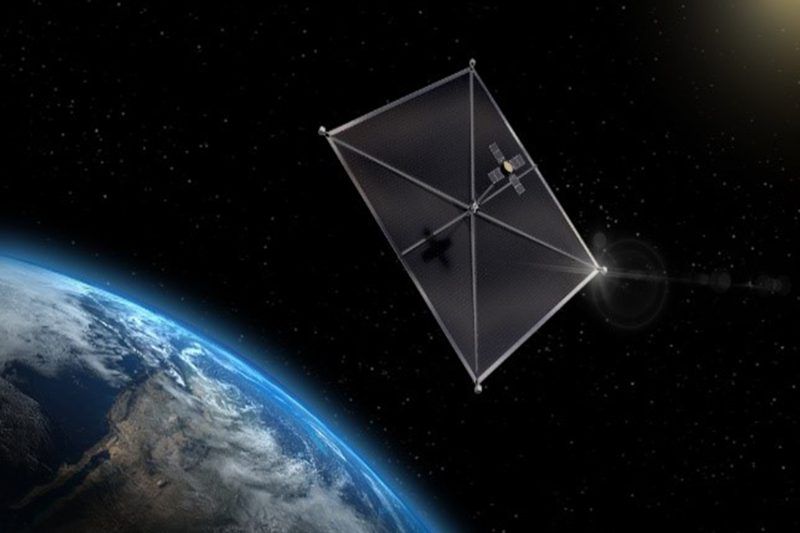
This Business Wants to Beam Solar Energy from Orbit
- Business
- February 2, 2024
The least expensive electricity source in recorded history is solar energy. However, since solar energy isn’t always available and battery storage is still very costly, a few businesses are developing an alternative strategy that involves launching solar panels into space and returning the energy to Earth.
According to a Caltech researcher, “it’s always noon on a sunny day” in space.
The underlying concept is not new; NASA started researching space-based solar power in the 1970s, and it was first referenced in a science fiction story in 1941. It hasn’t always been financially possible. However, a few engineers developing the technology think that’s no longer the case.
Ed Tate, cofounder and chief technology officer of Virtus Solis, an early-stage firm that stated today that it plans to trial its space-based solar tech in orbit in 2027, says, “More than 50 years ago, the physics were proved out.” “In the past couple of years, the engineering has been accepted as being possible. The real transition here is the economics—we think that now, with all the trends that are there, that the economics are viable.”
The proposal calls for placing solar panels in medium Earth orbit, after which the panels will be automatically assembled into massive arrays by robots. The end result will be hundreds of thousands of satellites interconnected like Lego blocks. With antennas on one side, electronics in the center, and solar panels on the other, each hexagon-shaped spacecraft is about five feet wide. Photons in an invisible light beam would transport the electricity back to Earth in place of electrons traveling through wires. “We take the sunlight and we convert it into radio frequency beams,” says Tate. “The beams then are transmitted very narrowly to a target on the ground.”
The company claims that because the intensity is far lower than that of sunshine and the beam is directed toward a ground-fenced point, it is safe. (However, it’s unclear if public acceptance would be difficult; conspiracy theorists have already linked the 2018 California wildfires to as-yet-undiscovered “space lasers”).
Through the use of a receiver placed the length of a football field, the company has already shown off wireless power transfer on the ground. Subsequently, it will involve constructing prototype satellites and conducting ground tests to confirm that their functionalities align with theoretical predictions. It then aims to test a robotic assembly system in space in collaboration with Orbital Robotics, another firm. The 2027 pilot is intended to be a tiny spacecraft, returning only one kilowatt of energy to Earth. However, the firm wants to launch its first commercial system into orbit by 2030. Hundreds of feet wide, the first complete system will supply electricity to considerably bigger ground-based receivers. Once DC power has been produced, the electricity will either be consumed directly at locations like data centers or green hydrogen plants, or it will be fed into the grid.
According to Tate, the method is more effective than developing solar power and transmission infrastructure on Earth. “Building a space-based solar power plant, we can move power from one end of the continent to the other because we’re just making a small change of where the beam goes,” he says. “And we use about as much material to move from one end of the continent to the other as if you need to move about 100 miles on the ground. That’s a massive savings in what you need to commit to infrastructure and what you need to commit to resources to make it work.”
According to a recent NASA assessment, space-based solar technology is still not economically feasible; nevertheless, the firm claims that the research’s cost assumptions are out of date. Launching a satellite has become far less expensive, and this trend will continue. It is feasible to assemble robots. According to Tate, “Robotics completely changes the equations and drops the cost radically for building anything in space,” says Tate. The cost of wireless energy transfer technologies has also decreased. The technology is expected to be less expensive than ground-based solar power due to its high efficiency.
Some are pursuing the same objective, such as the U.K.-based company Space Solar. The European Space Agency program Solaris is researching the technology and intends to publish a feasibility assessment early in 2019. As early as next year, Japan plans to construct a solar power grid in space. In 2028, the Chinese government intends to showcase the technology. A prototype that was launched into space last year returned a very little amount of energy to the team’s Pasadena facility at Caltech, where scientists have been working on a version of the technology for ten years.
It’s still too early to tell if big initiatives will be successful. However, the potential is enormous: if it can become a commercial product, it may be able to scale up to supply all of humanity’s energy needs.